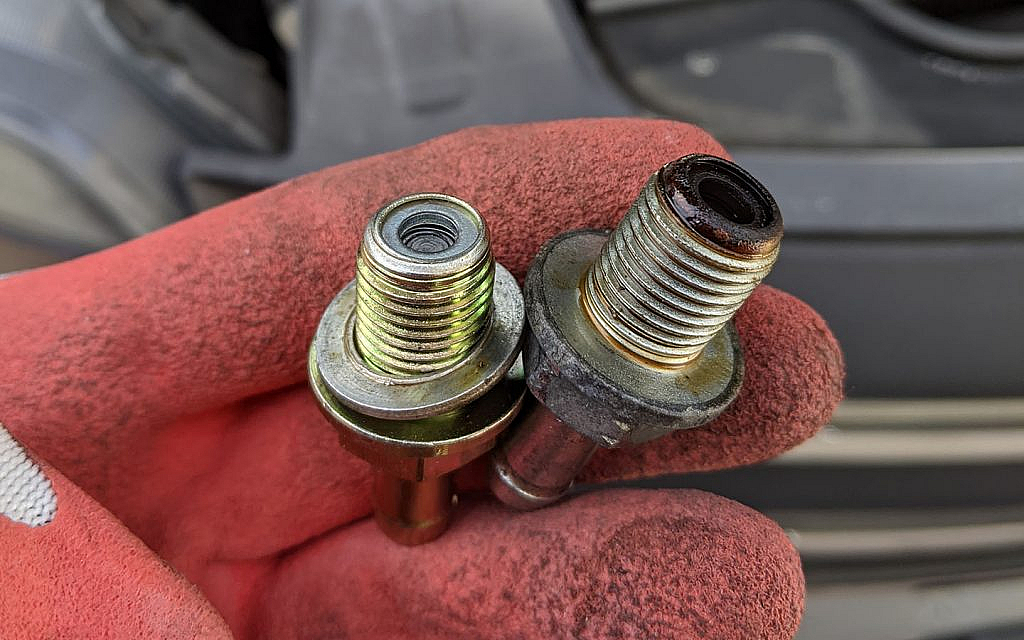
- What is a PCV Valve in a Car
- Symptoms of a Bad PCV Valve
- How to Maintain PCV Valve
- FAQs
Internal combustion engines are by far the most common type of engine used in vehicles. These engines burn fuel which generates heat energy. That said, the excessive heat energy and gases are flushed out from the engine through the exhaust system. However, a certain proportion of gases pass the exhaust system and enter different parts of the engine. This is when the Positive Crankcase Ventilation (PCV) valve comes into the picture.
Let’s dive a little deeper into the purpose and significance of PCV valves in cars.
What Is a PCV Valve in a Car
Crankcase is a car engine part responsible for holding engine oil. Therefore, the gases pass by the exhaust system and enter into the crankcase and mix with motor oil leading to multiple issues. For instance, the mixing of oil and gas inside an engine can create a slimy material known as engine sludge affecting the overall efficiency of an internal combustion engine.
The gases gathered in the crankcase majorly comprised unburned fuel. That said, the PCV valve in the crankcase absorbs and recirculates these gases to be used in the combustion process again. In this manner, it not only prolongs the engine life but also reduces the carbon footprint of a vehicle.
The process was initially used in military vehicles and was later introduced in conventional cars during the 1960s. Considering its impact on emissions levels, the PCV valve has become a standard in all automobiles.
Now that you are aware of what is a PCV valve on a car let’s move towards its functioning.

PCV Valve Function
The PCV valve’s purpose is to emit excessive gases from the crankcase and reuse it in the combustion process. The valve absorbs all the gases deposited in the crankcase and redirects these gases to the air intake tract. The air intake tract is used to absorb fresh air from the environment for combustion.
The gases supplied by the PCV valve mix with the fresh air making a perfect combination for combustion. The PCV valve continued to recirculate the air till the engine kept running.
Symptoms of a Bad PCV Valve
PCV valve malfunctioning does not directly impact driving, but it creates multiple underlying issues. Drivers might face issues like engine misfiring or oil leakage when the PCV valve malfunctions.
Following are some common symptoms that will answer how to know if a PCV valve is bad.
Hissing or Whistling Sound
The car engine will make a hissing or whistling sound when a PCV valve malfunctions. When gases are not flushed out, it creates excessive pressure inside the crankcase creating small cracks. In worst-case scenarios, it can result in a blown head gasket. When gases under high pressure are released from these cracks, it creates a hissing or whistling sound.
Poor Fuel Economy
A bad PCV valve can disrupt the air-to-fuel ratio of an engine affecting the combustion process. Inadequate combustion requires more fuel and generates less energy leading to poor fuel efficiency.
Aside from bad PCV valves, here are some other reasons for high fuel consumption that drivers must look for.
Oil Leaks
The clogged valve restricts the cylinder’s blowback pressure stressing out the crankcase. After certain pressure, the crankcase leaks resulting in oil leakage from the engine.
Smoke from Exhaust
When the PCV valve stops functioning, it causes oil leakage allowing it to enter the combustion chamber. The presence of oil in the combustion chamber can be recognised by black smoke from the exhaust.
Engine Misfiring
Aside from the above-mentioned symptoms, in some cases, engine misfiring is also considered a symptom of a bad PCV valve. Modern vehicles can even illuminate engine check light warning driver regarding a potential flaw in the valve.
How to Maintain PCV Valve
PCV valves, unlike other engine parts, do not have expiry or need to be changed after covering a certain distance. However, these valves are generally made from rubber or plastic and are prone to damage.
- The first step in maintaining a PCV system is to inspect it physically. Check all the hoses, o-rings, grommets and fittings. In case any part is brittle or damaged, change it immediately.
- Some PCV valves have mesh filters that should be cleaned regularly. Generally, it should be cleaned after driving 30,000 to 80,000 kilometres.
- In case the filter is completely damaged or clogged, it’s recommended to replace it. You can replace it at home, but it is suggested to consult with a mechanic.

FAQs
What does a PCV valve do?
The PCV valve works as an exhaust system and flushes out all the excessive gases trapped inside the crankcase. These gases are reused by the vehicle for combustion.
How much oil can a bad PCV valve burn?
A bad PCV valve does not burn the engine oil; rather, it causes leakage in the engine through which the oil seeps out. The amount of oil seepage depends on the size of the leakage and damage.
How often to replace the PCV valve?
The replacement of PCV valves varies from vehicle to vehicle. However, ideally, it should be replaced after every 80,000 km.
This was all about the PCV valve, its working and its significance in a vehicle. Internal combustion engines are dependent on multiple smaller components to function properly. Therefore, the malfunctioning of even a smaller auto part can affect overall performance. That said, when buying a used car for sale in the UAE, make sure it has a well-maintained and properly functioning combustion engine.
Besides, if your current vehicle engine is causing trouble, read through our blog on whether it is better to repair or replace the engine and make your decision.
Stay tuned to dubizzle’s auto blog for more information on PCV valve oil consumption.
Оставить ответ